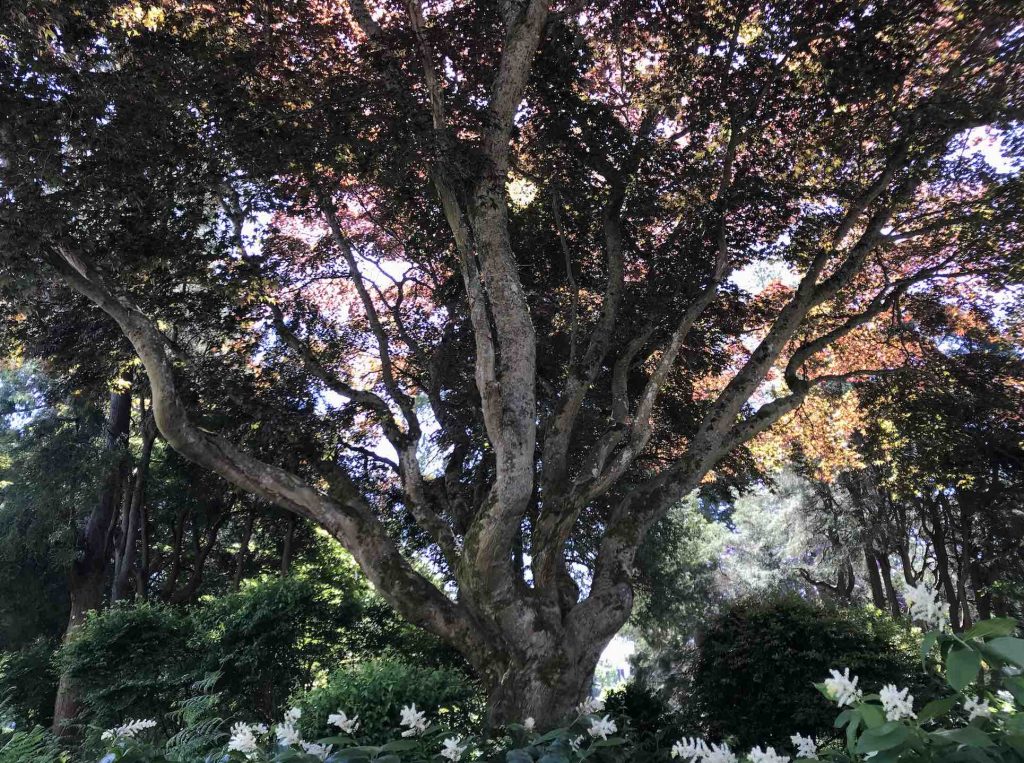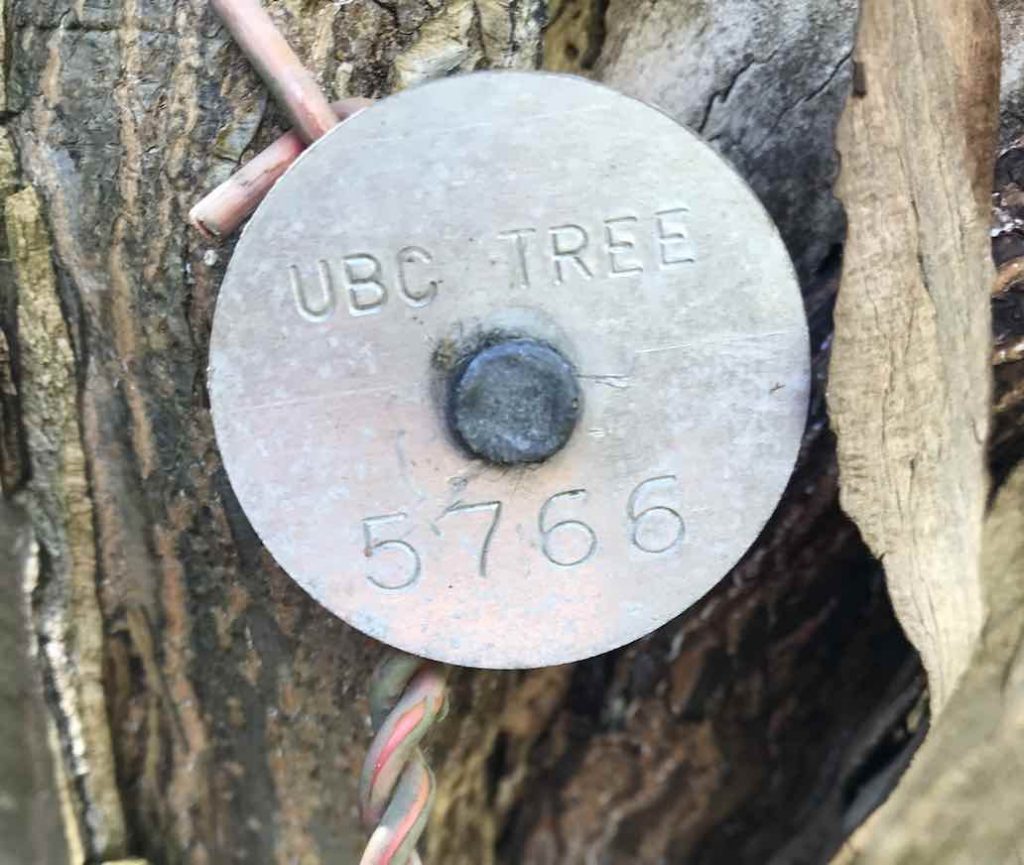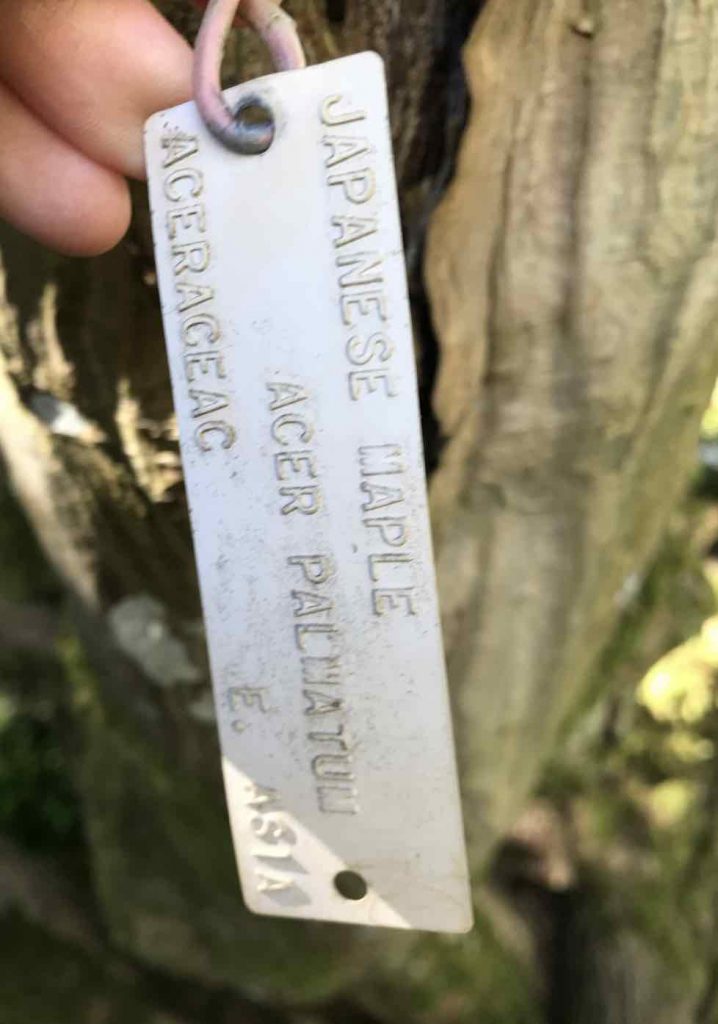Last week I took some time to visit the UBC Library Garden. Guided by our readings on sensory tours, I gave myself the prompt: Can I sense time here? Could I see, hear, smell, taste, touch time here?
I brought a copy of a booklet that I frequently consult called “A Self-Guide to UBC Campus Trees” (UBC Land and Building Services, publication date unknown). In the Table of Contents there is a heading titled “Areas of Campus” with subheadings, such as “Main Library”. Turning to that page, I found the following description:
The first gardens to evolve on campus were the pocket gardens on the north and south sides of the Main Library (1925-1930). These were designed by the University’s first Landscape Architect, Frank E. Buck (on the new campus from 1926-1949). The gardens were planted in a hybrid Japanese-English style with rock walls, bridges, ponds, creeks, winding pathways and a selection of oriental plants. Many of the original trees can still be seen here.
I read the descriptions of several trees that were located in this area near the Library, each with a four-digit number the preceded the common name and then the Latin botanical name. Also noted were the location and “comments”. I was first interested to visit “5766 Japanese Maple” as the comments said: “This is the largest Japanese Maple on campus. Native to Japan, Central China & Korea.” The location is not exactly in the area that I had demarcated as my site of learning for the course, but adjacent to it. Finding it was relatively simple, so much so that I was shocked that I had never noticed it before, considering how much I examine trees on campus regularly. As it was then, seeing time before me:

UBC Tree 5766 Japanese Maple, Acer palmatum, Photo by Amy Scott Metcalfe, 2021.
Many trees on campus are tagged, some with two tags, such as these:


The tree is magnificent, and probably nearly 100 years old. I have a new route added to my tree visits now.
